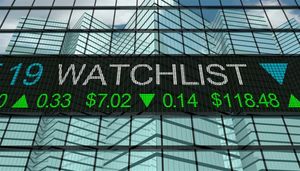
Federal Reserve Chairs, throughout history, have periodically issued warnings about elevated stock market valuations, acting as a sober voice amidst periods of investor exuberance. These pronouncements, while not always leading to immediate or sustained market corrections, consistently capture headlines and often trigger immediate shifts in investor sentiment and market behavior. The most recent instance on September 23, 2025, saw Fed Chair Jerome Powell reiterate concerns about "fairly highly valued" equity prices, prompting an immediate, albeit moderate, downturn across major U.S. indices, with the Dow Jones Industrial Average (DJIA) closing 0.2% lower, the S&P 500 (SPX) dropping by 0.5%-0.6%, and the tech-heavy Nasdaq Composite (IXIC) experiencing nearly a 1% decline. This reaction underscores a recurring pattern: while the long-term impact might be debatable, the market's initial response to such high-profile warnings is almost always a cautious retreat.
These warnings serve as a psychological touchstone for investors, reminding them of potential risks lurking beneath seemingly endless bullish trends. They can signal a potential shift in the Fed's perception of financial stability or simply a desire to temper speculative fervor. While the immediate aftermath often involves increased volatility and selling pressure, particularly on sectors perceived as overvalued, historical analysis suggests a more nuanced picture regarding the lasting effects on market trajectory.
A History of Caution: From Irrational Exuberance to Fairly High Valuations
The Federal Reserve's role extends beyond monetary policy to maintaining financial stability, a mandate that occasionally compels its leaders to comment on asset valuations. This tradition gained significant notoriety with former Fed Chair Alan Greenspan's famous "irrational exuberance" speech in December 1996. Despite his eloquent warning against improperly inflated asset values, the dot-com bubble continued to inflate for another three years before its eventual burst, demonstrating that a Fed warning, by itself, is not always a direct catalyst for a market reversal.
More recently, subsequent Fed Chairs have echoed similar sentiments in varying economic climates. Ben Bernanke warned of excessive risk-taking in May 2013, while Janet Yellen expressed concerns about high valuations in specific sectors in July 2014 and the overall market in May 2015. Current Chair Jerome Powell has also frequently addressed valuation issues, notably during the pandemic, attributing asset price bubbles to vaccination campaigns and economic reopening in April 2021. His recent comments on September 23, 2025, regarding "fairly highly valued" equities, though coupled with a clarification that it is not the Fed's role to determine appropriate stock prices and that current conditions don't pose "elevated financial stability risks," still triggered an immediate market reaction. These warnings typically emerge when key valuation metrics, such as the S&P 500 Shiller CAPE ratio, indicate historically stretched levels, suggesting a disconnect between asset prices and underlying fundamentals.
The immediate aftermath of such pronouncements is often characterized by a "wobble in sentiment." On September 23, 2025, the U.S. stock market's downturn, which ended a three-day winning streak, highlighted this sensitivity. High-flying technology giants, often at the forefront of valuation concerns, typically bear the brunt of initial selling pressure. This immediate reaction is less about a fundamental re-evaluation of corporate earnings and more about a psychological recalibration as investors digest the Fed's cautionary tone, leading to increased caution and a potential rotation out of perceived overvalued assets.
Navigating the Aftermath: Winners and Losers in a Cautious Market
When a Federal Reserve Chair signals concerns about high stock prices, the market often undergoes a subtle but discernible shift in investor preference, creating potential winners and losers. Companies with stretched valuations, particularly those in high-growth, technology-driven sectors that have seen rapid price appreciation, frequently experience immediate selling pressure. For instance, following Chair Powell's recent remarks on September 23, 2025, the tech-heavy Nasdaq Composite (IXIC) saw the steepest decline, reflecting the market's tendency to prune back speculative positions in companies like NVIDIA (NASDAQ: NVDA) or Tesla (NASDAQ: TSLA) that have benefited from strong growth narratives and investor optimism.
Conversely, more defensive sectors and value-oriented companies may see a relative influx of capital. Investors, seeking safety and stability, might rotate into sectors with lower valuations, consistent dividends, or less sensitivity to economic cycles, such as utilities, consumer staples, or healthcare. Financials could also benefit if the underlying message is about a healthy, though potentially overheating, economy. However, the impact isn't always uniform, and even within growth sectors, companies with robust fundamentals and clear profitability pathways might experience shallower pullbacks, with sophisticated investors viewing these dips as buying opportunities, especially amid ongoing enthusiasm for themes like artificial intelligence.
Ultimately, the "winners" in such an environment are often those companies that can demonstrate resilient earnings, strong balance sheets, and a clear path to profitability independent of speculative sentiment. The "losers" are typically those whose valuations are heavily predicated on future growth potential without a strong foundation of current earnings, making them more susceptible to a re-evaluation when the Fed introduces a note of caution.
Broader Implications: Beyond the Immediate Reaction
The wider significance of Federal Reserve Chair warnings about high stock prices extends beyond immediate market fluctuations, offering insights into broader industry trends and the interplay between monetary policy and financial markets. While these warnings can trigger short-term volatility and shifts in sentiment, historical analysis suggests they rarely serve as the direct catalyst for significant, sustained market corrections. Instead, such corrections are more often triggered by fundamental macroeconomic weaknesses, such as a deterioration in the labor market, a significant economic slowdown, or unexpected policy shifts.
This perspective aligns with research from institutions like JPMorgan, which indicates that following Fed Chair warnings on valuations, the S&P 500 (SPX) has historically not experienced negative returns in the subsequent 1-month, 6-month, or 12-month periods. In fact, average positive returns 12 months after these warnings were only slightly lower than the performance in the six months prior, suggesting a slowdown in growth but continued market resilience. This highlights a crucial distinction: the Fed's warnings are often a cautionary signal about potential risks, not a direct forecast of an imminent crash.
Regulatory and policy implications are also subtle but present. While the Fed does not directly intervene to set stock prices, its verbal interventions can influence market participants to reassess risk and perhaps prompt a more disciplined approach to investing. This can indirectly support financial stability by cooling down excessively speculative behavior. The historical precedent of Greenspan's "irrational exuberance" speech, followed by a prolonged period of market ascent, underscores that market momentum, driven by underlying economic forces and technological advancements (like the internet then, or AI now), can often override verbal caution in the short to medium term. The broader industry trend is that periods of accommodative monetary policy often lead to asset price inflation, making these warnings a recurring feature of economic cycles.
What Comes Next: Navigating Future Market Scenarios
Looking ahead, the market's response to Federal Reserve warnings about high stock prices is likely to continue exhibiting a dual nature: immediate caution followed by a re-evaluation based on underlying economic fundamentals. In the short term, investors should anticipate continued volatility, particularly in sectors with elevated valuations. We might see further instances of sector rotation, where capital flows from growth-oriented stocks to more defensive or value-centric equities as investors seek a safer harbor. These periods of heightened caution could present tactical opportunities for those looking to buy quality companies at a discount, especially if the pullbacks are perceived as shallow and not indicative of a broader economic downturn.
In the long term, the trajectory of the stock market will largely depend on factors beyond the Fed's verbal warnings. Key drivers will include the actual performance of the economy, corporate earnings growth, the path of inflation, and the Federal Reserve's actual monetary policy decisions regarding interest rates and quantitative easing. If macroeconomic conditions remain robust, with healthy employment figures and sustainable growth, then any market dips following Fed warnings may indeed be viewed as temporary corrections rather than the onset of a bear market.
Potential strategic pivots for investors might include increasing diversification, rebalancing portfolios to align with risk tolerance, and focusing on companies with strong cash flows and sustainable business models. Market opportunities could emerge in sectors that are currently undervalued but possess strong growth potential, or in companies that are innovating effectively even within a cautious environment. Conversely, challenges will arise for highly leveraged companies or those whose business models are heavily reliant on cheap capital and speculative investor sentiment. Scenarios range from a continued "muddle-through" market, where growth persists despite warnings, to a more significant correction if the Fed's warnings are eventually coupled with deteriorating economic data or an aggressive tightening of monetary policy.
Comprehensive Wrap-Up: Investing in a Cautious Environment
In summary, Federal Reserve Chair warnings about high stock prices are significant signals that command market attention, often leading to immediate, albeit typically moderate, market fluctuations and shifts in investor sentiment. While these pronouncements can trigger increased volatility and selling pressure, particularly on high-valuation growth stocks, historical data consistently suggests that they rarely serve as the sole or primary catalyst for sustained, significant market corrections. Instead, the market's long-term health and direction are more profoundly influenced by underlying macroeconomic fundamentals, corporate earnings, and the actual course of monetary policy.
Moving forward, the market is likely to remain responsive to any further communication from the Fed regarding financial stability and asset valuations. Investors should assess these warnings not as definitive predictions of a crash, but rather as calls for prudence and a reminder to scrutinize valuations. The key takeaway is that while investor psychology plays a role in immediate reactions, a durable market downturn typically requires more fundamental economic stressors.
What investors should watch for in the coming months are not just the Fed's words, but its actions and the broader economic indicators. Pay close attention to employment data, inflation trends, corporate earnings reports, and any shifts in the Fed's stance on interest rates. These tangible economic factors, rather than verbal cautions alone, will ultimately dictate the market's trajectory and present the most significant opportunities or challenges. A balanced, diversified portfolio and a focus on long-term value remain prudent strategies in an environment where the Fed's cautionary whispers are a recurring, yet often temporary, feature of the financial landscape.
This content is intended for informational purposes only and is not financial advice.





